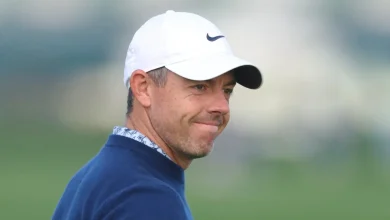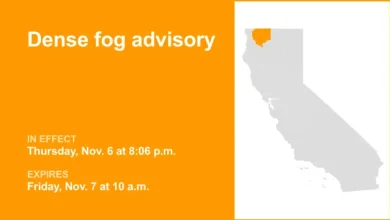Beyond Remembrance: A Blueprint for Protecting Black Trans Lives

Every year around this time, we gather in churches, community centers, and small candle-lit rooms to read the names of people most of the world never bothered to learn while they were alive. We cry, we hug, we hold each other up. And then most of us go home, and the world keeps spinning like it didn’t just take another one of us.
As a Black trans woman, I’ve stood in those spaces where grief feels heavy in the air. I’ve also been outside those spaces, watching folks who need to be in the room choose not to show up. And I have to be honest, sometimes the Transgender Day of Remembrance (TDOR) feels like something we’re doing for the moment, rather than for the movement. It’s as if it has turned into an event you post about, not a call you answer.
What are we doing tomorrow?
This day wasn’t made for hashtags or photo ops. It started as an act of defiance, a refusal to let the world forget us. Somewhere along the line, the world heard our pain, packaged it, and made it palatable. We talk about loss, but we don’t discuss why we keep experiencing it. We cry as we read the names, but we don’t demand justice for the lives behind them.
And I get it, grief is exhausting. But we can’t just remember; we have to rebuild. We can’t just light candles; we have to light fires under the systems that keep making our names the next ones on those lists. Because the violence against Black trans women ain’t random, it’s built in. It lives in silence, in the things we don’t say to each other, in the spaces where our stories get edited out.
So yeah, I’ll be at the vigil. I’ll read the names. But I’ll also be asking the same question I ask every year: what are we doing tomorrow?
This year, I’m calling for something more than candles and hashtags. I’m calling for a Blueprint for Change — a living model that communities across the country can adapt and repeat, not just to grieve trans lives, but to save them.
A Blueprint for Change: Turning Remembrance Into Action
Here are five steps that communities, cities, and organizations can take — practical actions that can make TDOR a catalyst for transformation.
1. Build Bridges Between Black Men and Black Trans Women
Our liberation is tied together. We need intentional spaces for conversation, education, and healing — barbershop talks, brotherhood circles, and workshops led by both trans and cisgender Black men. These aren’t just feel-good events; they’re prevention strategies. When Black men understand that protecting Black trans women strengthens the entire community, lives are saved.
2. Redefine Safety Through Accountability
We must move beyond symbolic gestures from law enforcement. Cities should implement joint accountability programs that pair police with community advocates to review acts of violence, address bias, and establish genuine prevention efforts. Training alone isn’t enough — accountability means consequences, transparency, and community oversight. Local sheriffs and police chiefs have considerable power to protect Black trans lives. Policies they can enact include:
- Mandatory Bias, Hate Crime, and Cultural Competence Training led by local Black trans advocates is repeated annually.
- Transparent Incident Reporting for hate crimes, murders, and police misconduct involving trans people. Ensure investigations are conducted promptly and include accurate reporting of the person’s name, image, and pronouns as used in their day-to-day life.
- Community Oversight Boards have the authority to review complaints, recommend disciplinary actions, and monitor outcomes.
- Partnership Programs pair officers with trans-led organizations for public safety collaboration and communication.
- Data Collection on anti-trans violence to guide policy and prevention strategies.
These policies move beyond performative gestures and create real accountability, ensuring that law enforcement becomes part of the solution, not the problem.
3. Fund Black Trans–Led Organizations Year-Round
Every major city has trans-led organizations doing lifesaving work — often on shoestring budgets. From The Mahogany Project in Houston to The Knights and Orchids Society in Alabama and Transinclusive Group in Florida, these are the people showing up when no one else does to provide housing, employment, clothing, and food. Support them not just in November, but in every funding cycle.
4. Center Local Leaders in National Conversations
Change doesn’t start in Washington — it starts in places like Birmingham, Baltimore, and Baton Rouge. Local organizers are already developing solutions, from restorative justice programs to trans-led community safety initiatives. National organizations and media outlets must amplify these local innovations so they can be replicated elsewhere.
5. Make TDOR a Call to Action, Not a Moment of Mourning
Every TDOR event should conclude with a clear, actionable next step, such as holding law enforcement leadership accountable for solving crimes committed against our community, signing up to volunteer, attending a town hall, donating to a trans-led organization, or advocating for trans-inclusive policies. The tradition of remembrance should double as a rallying cry for the living — a blueprint for collective responsibility.
If we follow these steps, remembrance can evolve from ritual to revolution. It can become a national movement that builds safer communities, reforms broken systems, and changes the way we love and protect one another.
Because the truth is: we don’t need another ceremony — we need a strategy.
This TDOR, when we say their names, let’s also say our commitments. Let’s promise to act, to listen, to change. Let’s promise that the next generation of Black trans girls won’t only survive — they’ll thrive.
Hope Giselle-Godsey is the National Black Justice Collective’s Monica Roberts Senior Scholar. She is an author, activist, and community organizer working at the intersections of race, gender, and LGBTQ+ justice.





